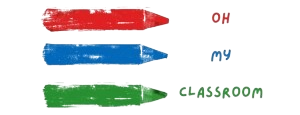Engaging preschoolers in clothing activities not only spark their creativity and imagination but also helps them develop essential skills such as fine motor skills, problem-solving, and personal care.
Exploring various clothing-related activities provides an opportunity for children to learn about different textures, colors, and patterns while fostering their independence and self-expression.
Now, we have curated exciting clothing activities for preschoolers that will inspire and entertain them.
Get ready for a world of fun and learning as we embark on these engaging adventures with clothes!
Dress-Up Parade:

Organize a dress-up parade where each child can select their favorite outfit or costume. Provide a wide range of clothing items, including hats, scarves, dresses, shirts, and shoes. Encourage children to express their creativity and imagination by mixing and matching different pieces to create unique and colorful ensembles. Once everyone is dressed up, let the parade begin! Children can strut their stuff, showcasing their outfits and enjoying the applause and admiration from their peers. This activity not only promotes self-expression but also boosts confidence and social interaction among preschoolers.
Design a T-Shirt:

Set up a crafting station with plain white t-shirts, fabric markers, fabric paints, and stencils. Let children unleash their artistic skills as they design their own personalized t-shirts. Encourage them to draw pictures, write their names, or create patterns and designs using the materials provided. This activity allows preschoolers to explore their creativity while developing fine motor skills and hand-eye coordination. At the end of the activity, each child will have a unique, wearable masterpiece to proudly showcase.
Related: 20 Free Preschool Camping Theme Activities
Clothing Obstacle Course:
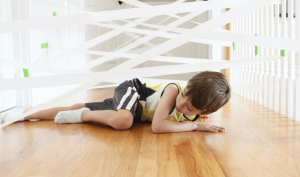
Create an exciting clothing-themed obstacle course using clothing items such as oversized shirts, pants, hats, and socks. Scatter the clothing items around the room or outdoor area, and design various challenges for the children to complete. For example, they can crawl through a tunnel made of pants, balance on a tightrope of shirts, or jump over a stack of hats. This activity not only promotes physical activity and gross motor skills but also encourages problem-solving and spatial awareness as children navigate through obstacles.
Laundry Day Sensory Play:

Set up a pretend laundry station with a large basin or bucket filled with warm water, soap bubbles, and a variety of fabric pieces. Invite children to engage in sensory play by washing and scrubbing the fabric items, just like on a real laundry day. They can practice squeezing, wringing, and rinsing the clothes, which enhances their hand strength and coordination. Additionally, provide different scented fabric softeners or essential oils to add an olfactory element to the activity, stimulating their senses and making the experience even more enjoyable.
Related: 20 Best Preschool Activities for Easter
Dress-Up Storytelling:

Combine the joy of dressing up with storytelling by providing a selection of costumes and props related to different characters or themes. Encourage children to choose their outfits and then use their imagination to create stories and role-play scenarios. They can take turns being the main characters and act out their adventures. This activity fosters language development, creativity, and social skills as preschoolers engage in collaborative storytelling and take on different roles. It’s a wonderful way to enhance their narrative skills and spark their imaginations.
Fashion Show Freeze Dance:

Turn your play area into a fashion runway and play some upbeat music. Encourage the children to strut their stuff and show off their best dance moves while wearing different clothing items. When the music stops, they have to freeze in their pose. This activity promotes physical movement, rhythm, and coordination while adding a creative twist to the fashion element.
Clothesline Matching Game:

Hang up a clothesline or string and clip pairs of socks, gloves, or other small clothing items onto it. Mix up the pairs and invite the children to match them up. They can take turns finding matching pairs and attaching them together with clothespins. This activity enhances visual discrimination, cognitive skills, and fine motor control as children focus on identifying matching patterns and manipulating the clothespins.
Weather Dress-Up:

Discuss different weather conditions with the children, such as sunny, rainy, snowy, or windy. Set up a dress-up station with appropriate clothing items for each weather type. Invite the children to choose outfits that match the given weather and explain why they selected those clothes. This activity promotes weather awareness, decision-making, and vocabulary development.
Shoe Sorting Relay:

Prepare a collection of shoes in different sizes, colors, and styles. Create two teams and set up relay stations with a pile of mixed-up shoes at each station. The first child in each team races to the shoe pile, finds a pair that matches, and puts them on. They then run back and tag the next team member, who repeats the process. The team that finishes sorting all the shoes correctly first wins. This activity enhances sorting skills, teamwork, and physical coordination.
Busy Bag with Pictures of Clothes:

Print and laminate paper dolls and clothes, attach magnets and provide a magnetic surface for children to mix and match outfits. This is a fantastic way to encourage creativity and develop vocabulary, color recognition, and fine motor skills while enjoying imaginative play.
Dressing for the Seasons:

Introduce the concept of different seasons to the preschoolers. Set up clothing stations representing each season, with appropriate clothing items such as coats, hats, shorts, rain boots, etc. Discuss the characteristics of each season and invite the children to choose the appropriate clothing items for that season. This activity enhances seasonal awareness, vocabulary, and decision-making skills.
Texture Exploration:

Gather a variety of fabrics with different textures such as soft, rough, smooth, and fuzzy. Blindfold the children and let them feel each fabric one by one. Encourage them to describe the textures and discuss how each fabric might feel when worn as clothing. This sensory activity develops tactile discrimination, language skills, and sensory awareness.
Make Pajama Art:

Pajamas are cozy and comfortable clothing worn during bedtime, providing a sense of relaxation and warmth. They come in various styles, colors, and patterns, allowing individuals to express their personal tastes even while they sleep. Pajamas often consist of a loose-fitting top and matching bottoms, made from soft fabrics like cotton or flannel. Some pajamas feature fun prints of animals, cartoons, or favorite characters, adding an element of playfulness to bedtime routines. Whether it’s snuggling up with a favorite book, watching a movie, or simply enjoying a peaceful night’s sleep, pajamas enhance the overall experience, making bedtime a cozy and enjoyable time of the day.
Button Art:
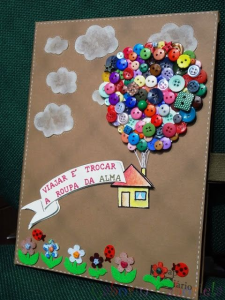
Create button artboards by gluing different-sized buttons onto cardboard or foam sheets. Provide the children with colored construction paper and encourage them to arrange the paper pieces on the button artboards, matching the colors or creating patterns. This activity improves color recognition, fine motor skills, and hand-eye coordination.
Laundry Shop Pretend Play:

Set up a pretend play area as a laundry shop, complete with baskets, clotheslines, clothespins, and play money. Let the children take turns being customers or shopkeepers. They can sort, fold, and hang clothes, use play money for transactions, and engage in imaginative play around the theme of a laundry shop. This activity fosters role-playing, social skills, and imagination.
DIY Tie-Dye:

Prepare plain white t-shirts or other clothing items and a tie-dye kit. Show the children different tie-dye techniques, such as spirals, stripes, or bullseye patterns. Let them choose their preferred technique and create their own tie-dye designs. This hands-on activity promotes creativity, color recognition, and fine motor skills as children manipulate the fabric and experiment with different dyeing techniques.
Design a Costume:
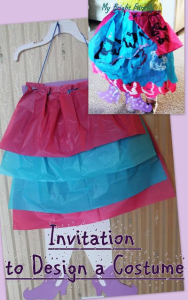
Costumes are transformative creations, bringing characters to life. Through thoughtful design and attention to detail, costumes transport individuals into the realms of imagination and fantasy, enabling them to embrace their alter egos with style and flair.
Play a Memory Game with Clothes-Related Vocabulary:

In this laundry sorting game, children learn to sort objects by color. Using a three-dimensional washing machine template, kids mix and sort clothing items, choosing the right washing machine for each item. This activity helps toddlers learn basic colors and understand the principle of laundry organization.
Create a Pretend Clothing Store:

In this clothing unit activity, children set up a pretend clothing store. They fold, hang, and label donated clothes, create signs, and engage in role-playing. This hands-on, student-led activity helps kids practice organizational skills, environmental print recognition, and cooperation.
Shoe Tying Practice:
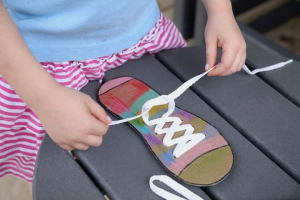
Set up a shoe tying station with shoes that have laces or fabric strips tied together. Demonstrate the steps of shoe tying, and provide visual aids or picture cards to help children follow along. Encourage them to practice tying and untying the laces or fabric strips. This activity develops fine motor skills, hand-eye coordination, and independence as children learn an essential self-care skill.
